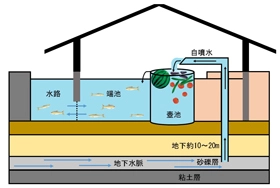
Years ago, I took an online course on mountains, and one fact that stuck with me from it was about how people in the USA accidentally polluted the water in New York City by cutting down trees.
It was the 1800s, and the trees in the Catskill Mountains were cut down to accommodate growing populations, and as a result, the water quality for New Yorkers deteriorated rapidly. Yes, the agriculture pollution and sewage did play a part, but the trees were decided to be such a big problem, that they decided something had to be done.
So, they purchased land, and planted 18000 trees to restore the natural ecosystem.
How does this water-cleaning work? With watersheds.
“Watershed: an area of high ground from which water flows down to a river” | Cambridge Dictionary
Imagine it is raining in a forest. Droplets hit the ground, and —thanks to the vegetation which slows runoff — it is absorbed into the soil like a sponge. As the water moves through the soil, microbes are actively removing harmful pollutants, silt is filtered, and plants removing fertilizers.
Some of the water will end up in our lakes and streams, but will be much cleaner than when it started.
"The ability of forests to aid in the filtration of water doesn’t only provide benefits to our health and the health of an ecosystem, but also to our pocketbooks. Forest cover has been directly linked to drinking water treatment costs, so the more forest in a source water watershed, the lower the cost to treat that water. Forests provide these benefits by filtering sediments and other pollutants from the water in the soil before it reaches a water source, such as a stream, lake or river." | American Forests
Since this intake and outtake of water is gradual, removal of these forests can even to lead to a higher chance of both droughts and floods.
More Info:


























 (
(


@shalafi@lemmy.world , do you have any advice by any chance?